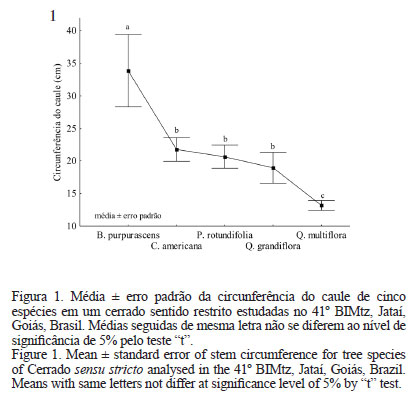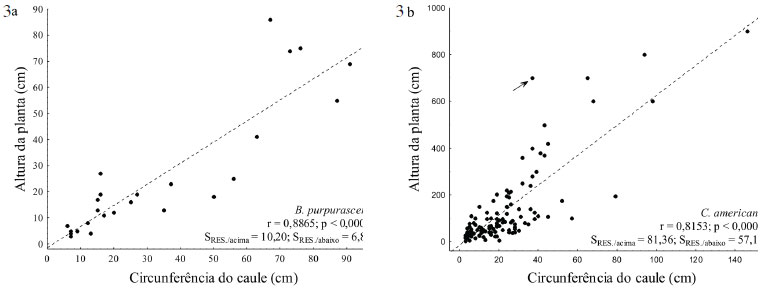The aim of this study was to analyze population structure and spatial distribution pattern of five tree species in a fragment of cerrado stricto sensu in the southwest of the Goiás State, Brazil. Fifty quadrats of 10 × 10 m (100 m²) were surveyed, and all individuals within each quadrat were sampled. The theoric distributions of Poisson and Negative Binomial and two indices of dispersion, the variance to mean ratio (I) and the Green's coefficient (Ig), were used to detect the spatial pattern of the populations. The population structure was verified by the frequencies distribution of six size classes. An aggregated spatial pattern was detected for all species, with smaller individuals segregated spatially from bigger individuals, except for Qualea grandiflora Mart., and also the distribution of size classes in "reverse J-shaped", but with many particularities. This suggests differences in the structural pattern of the populations investigated and, consequently, in its dynamics and structuring processes.
aggregated distribution; population structure; recruitment; reverse J-shaped


















